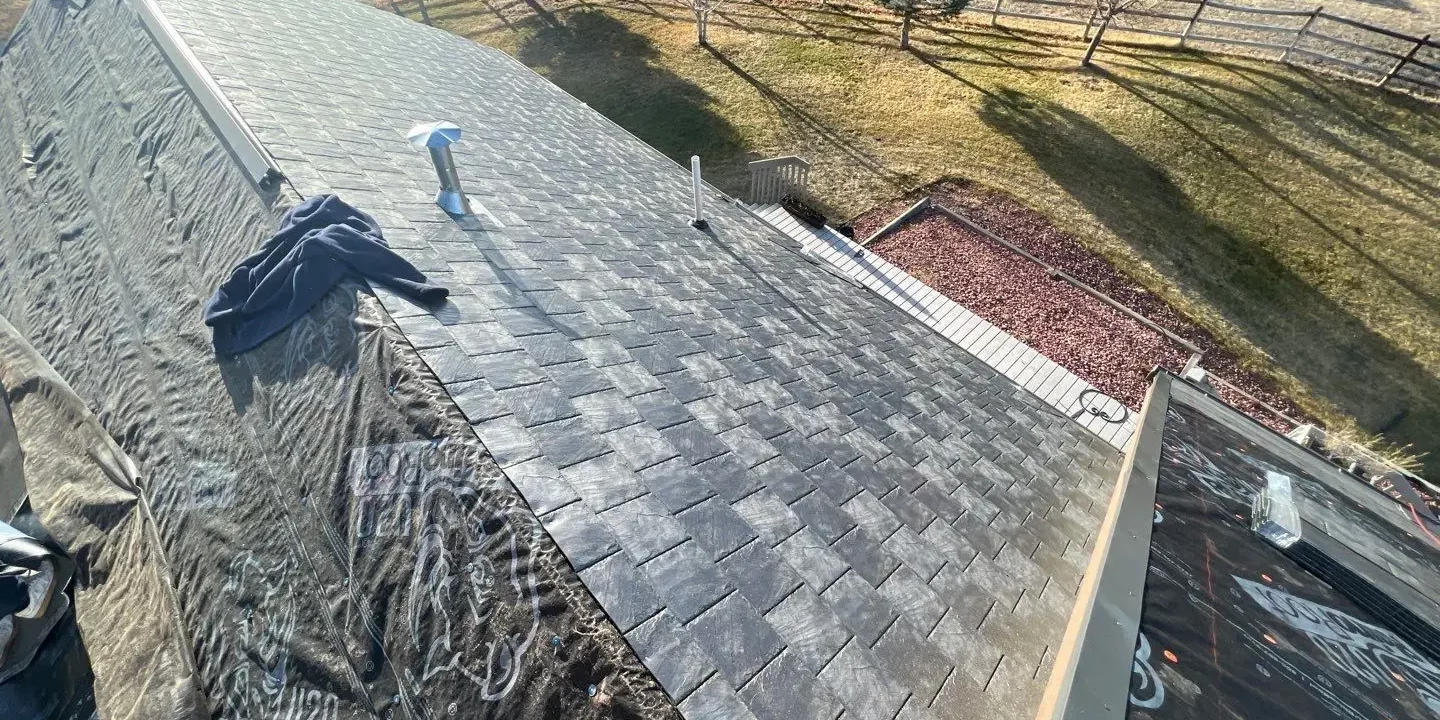Choosing the Best Hail-Resistant Roofing for Your Home
Living in areas prone to hail storms, such as Colorado, presents unique challenges for homeowners. These natural events can cause significant damage to roofs, leading to costly repairs. Selecting the right hail-resistant roofing is paramount for protecting your home. This guide aims to provide a detailed overview of hail-resistant roofing options, helping you make an informed decision.
Understanding Hail and Its Effects on Roofs
Hailstorms can wreak havoc on roofs, leaving homeowners with costly repairs and insurance claims. Understanding how hail forms and its effects on roofing materials is crucial. Hailstones are balls of ice that form in severe thunderstorms with strong updrafts. The size of hail can range from small pea-sized pellets to large golf balls or even softball-sized chunks. When these icy projectiles strike your roof, they can cause various types of damage, including:
- Dents and Bruises: The impact of hail can create dents and bruises on asphalt shingles, metal panels, and synthetic polymers.
- Cracks and Fractures: Hail can crack and fracture roofing materials, leading to water leaks and structural issues over time.
- Granule Loss: On asphalt shingles, hail can strip away protective granules, exposing the underlying layers to the elements.
The Best Hail-Resistant Roofing Materials
While no roof is entirely “hail-proof,” certain materials offer better resistance against hail damage. Here are the top hail-resistant roofing options:
Asphalt Shingles
Asphalt shingles are widely available and cost-effective, often available with enhanced impact-resistant variants. However, their impact resistance is moderate compared to other alternatives.
Metal Roofing
Known for its durability, metal roofing boasts excellent hail resistance along with a long lifespan and minimal maintenance requirements. Though it involves a higher upfront investment, the long-term benefits are significant.
Synthetic Polymers
Materials like rubber and plastic provide high impact resistance and flexibility. Coupled with eco-friendly options, these tend to come at a higher cost compared to traditional asphalt shingles. Careful consideration of these options empowers homeowners to select the most suitable hail-resistant roofing for their needs.
Factors to Consider When Choosing Hail-Resistant Roofing
Selecting the right hail-resistant roofing involves several crucial factors:
Impact Ratings and Testing Standards
Understanding impact ratings and testing standards is essential for ensuring the durability and hail resistance of your roofing material. UL 2218 and FM 4473 are widely recognized standards in the industry. Materials that conform to these standards have been rigorously tested and proven to exhibit an elevated level of hail resistance, promising better protection for your home against hailstorms.
Local Climate and Hail Frequency
Evaluate your region’s hail risk and frequency. In areas like Colorado, where hailstorms are frequent and severe, investing in hail-resistant roofing becomes even more critical. By opting for materials specifically designed to withstand hail impact, homeowners can safeguard their properties from potentially devastating damage.
Cost and Insurance Considerations
Factoring in both the initial cost and potential long-term savings is prudent. While hail-resistant roofing materials may involve a higher upfront investment, this cost is often outweighed by the advantages they offer over time. Many insurance providers recognize the value of hail-resistant roofs in mitigating damage, often extending discounts on insurance premiums for homeowners with such roofs.
Maintenance Tips for Prolonging Hail-Resistant Roof Lifespan
Ensuring the longevity of your hail-resistant roofing requires consistent maintenance. Here’s a rundown of essential practices:
Regular Roof Inspections
Commit to periodic roof inspections, ideally conducted by experienced professionals. These inspections unearth potential problems in their early stages, allowing for timely interventions.
Gutter and Downspout Maintenance
Undertake routine maintenance of your gutters and downspouts. Clear any debris to guarantee proper drainage, preventing water from pooling on your roof, which could otherwise lead to deterioration over time.
Quick Repairs for Hail Damage
Should your hail-resistant roofing experience damage from a hailstorm, swift action is key. Conduct a thorough inspection to identify any impact points and address these areas promptly to prevent water infiltration.
Hail Damage Insurance Claims and Roof Warranties
When confronted with the unfortunate occurrence of hail damage, having a solid grasp of both the insurance claim process and roof warranties becomes imperative:
Understanding the Insurance Claim Process
In the wake of hail damage, prompt action is pivotal. Notify your insurance provider about the incident promptly and provide thorough documentation of the hail damage. This meticulous approach ensures you receive the appropriate compensation for the incurred damage.
Roofing Manufacturer Warranties
Delve into the warranties offered by roofing manufacturers. Familiarize yourself with the specifics of the warranty associated with your chosen roofing material, empowering you to make an informed decision and safeguard your investment in a hail-resistant roof.
Conclusion
Investing in hail-resistant roofs is a smart decision for homeowners living in hail-prone regions like Colorado. While no roof can guarantee complete hail protection, hail-resistant materials like metal roofing, synthetic polymers, and impact-resistant asphalt shingles offer a higher level of durability and protection against hail damage. These roofs can save you from costly repairs and insurance claims in the long run, making them well worth the initial investment.
GCCS Roofing, Inc., located in Littleton, CO, is dedicated to providing high-quality roofing services. Upgrade your roof with hail-resistant materials and shield your home from hail damage. Schedule a roofing inspection today to ensure you choose the best hail-resistant roofing and prepare your home for any hailstorm. Safeguard your family and property.







